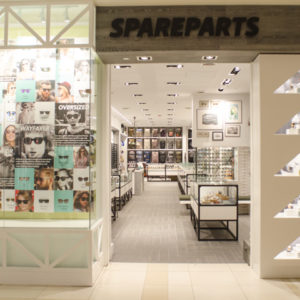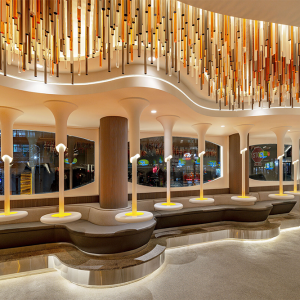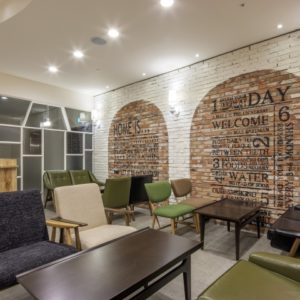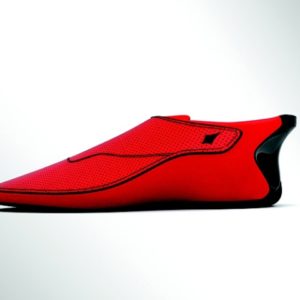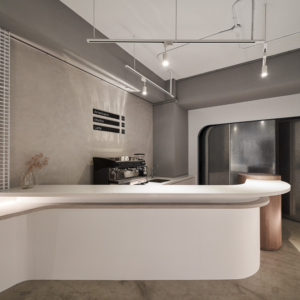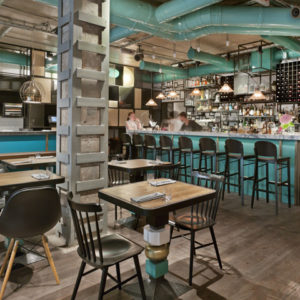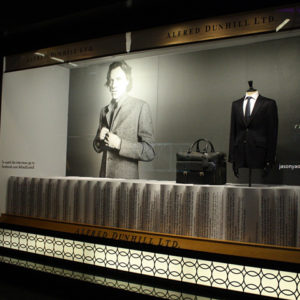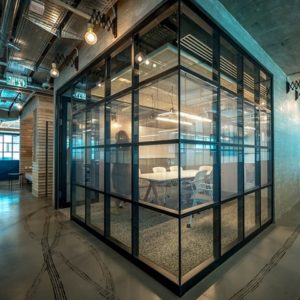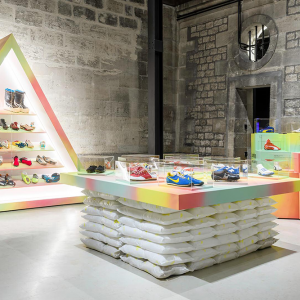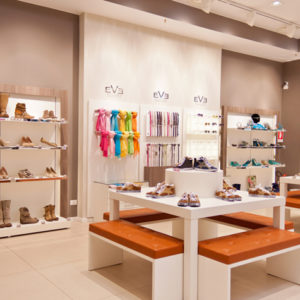

Charming wooden houses and canning factories have long dominated the cityscape of Stavanger and are an important part of the city’s history. Old Stavanger and the Norwegian Canning Museum are clear examples of the golden age of this industry from the 1870s to the 1970s and have become a major tourist attractions. The Norwegian Printing Museum is to be co-located with the existing Norwegian Canning Museum and together will tell about the industrial history of Stavanger during this time period in the new IDDIS Museum. The graphic industry developed in sync with the canning industry in Stavanger and is reflected on the tin can labels, called iddis in the local dialect.
The existing canning factory with characteristic chimneys still houses the Norwegian Canning Museum. The new museum sections consist of a three-story new building that echoes the identity of the Norwegian Printing Museum and with a facade adorned with letters, inspired by the type cases used by printers. In addition, a one-story glass foyer and café building join the museums into a single museum surrounding a courtyard. The new sections conform to the historic context without competing with the surrounding buildings.
The site is located along two major walking routes through Old Stavanger. From Øvre Strandgate, the most important tourist route through the district, a passageway opens up between the existing buildings and leads to the courtyard. From Andasmauet, an important diagonal connection with the Vågen harbor area, a footpath is being established along the steep descent to the courtyard. The museum site will be visible to the public from both sides and invite passers-by to walk across the grounds. This generates a meeting place in the courtyard, where the main entrance and café are located. The historic and modern expression creates a unique ambiance for the co-located museums and provides Old Stavanger with a new and exciting meeting place. The motto ‘Synergy in Old Stavanger’ refers to the interaction between the Norwegian Canning Museum and Norwegian Printing Museum parallel to the creation of a meeting place for visitors and local residents, resulting in a living museum.
The choice of materials was inspired by the surroundings. Old Stavanger is characterized by white wooden houses with red roof tiles. The canning factory has light grey plaster walls and window frames and doors painted reddish brown. The color scheme and materials continue in the new building in a new form in order to create harmonious interaction with the surroundings. The materials used are red tile, glass that reflects the surroundings, and exterior surfaces in white and reddish brown. The design of the glass facade with letters is inspired by the collection of printing machines and type cases for letters, the very starting point of the Norwegian Printing Museum. Wooden furniture is also used in part of the interior, inspired by the type cases themselves.
The visitor entrance leads to a foyer with a shared reception, shop, café, and information area. The historic facade of the smokehouse can be seen in the foyer. A glass ceiling connecting the foyer to the existing building offers views of the sky and chimneys. The facade of the first floor opens up to the inner courtyard and is primarily transparent in order to offer views of the foyer and museum walls behind it. The foyer becomes part of the outside courtyard as it were.
The exhibitions are displayed on one level that is aligned with the existing Norwegian Canning Museum. The layout is designed to demonstrate the overall pedagogical concept. The foyer offers separate access to both the Norwegian Canning Museum and Norwegian Printing Museum or visitors can choose to explore both museum sections. It is possible to lead visitors through a chronological development or production process by determining the route through the exhibition areas or giving them the possibility to wander freely around the various exhibitions. The rooms themselves create a unique ambiance and backdrop for these exhibitions. The Norwegian Canning Museum is housed in the former canning factory, offering an authentic setting. The Norwegian Printing Museum will have a new and unique identity, derived from the graphic theme. The transition exhibition on iddis (labels) and label production for the canning factories will be placed in the transition area between the Norwegian Canning Museum and Norwegian Printing Museum, yet also located at the intersection between the existing and new building and the existing factory walls.
The exhibitions will be supported by a layout that facilitates authentic activities and experiences. The combination of new and existing buildings creates completely new frameworks and opportunities for communication and experience. The historic smokehouse with chimneys is part of the Norwegian Canning Museum exhibition and is also connected directly to the café and outdoor seating area. This makes it possible to hold workshops where visitors can smoke and taste fish – an active museum at an authentic location. The second floor will house a print shop, consisting of a collection of printing machines and equipment that can be seen in operation and used for activities and workshops on the art of printing, letterpress printing, and bookbinding. The space offers views through the letter facade, which is inspired by the collection itself. The letters are printed directly on the glass and mirror-inverted from the outside as letterpress letters from type cases.
The foyer together with the café, kitchen, cloakroom, and assembly rooms can be rented separately for meetings or get-togethers organized by the business community, residents, museum friends’ associations, and others. Flexibility and today’s standards for comfort are addressed in the possibilities to change the exhibitions and use the space for various types of events, group work, and workshops. The living museum is an active meeting place where visitors can see and use operational machinery and printing equipment, make prints and bind books, smoked fish, and more. The inner courtyard can be used for outdoor gatherings. The steps, ramp, and sloping lawn can be used as an amphitheater for various events and will encourage community building and interaction in Old Stavanger.
Architects: Eder Biesel Arkitekter
Photographs: Maucus Sies
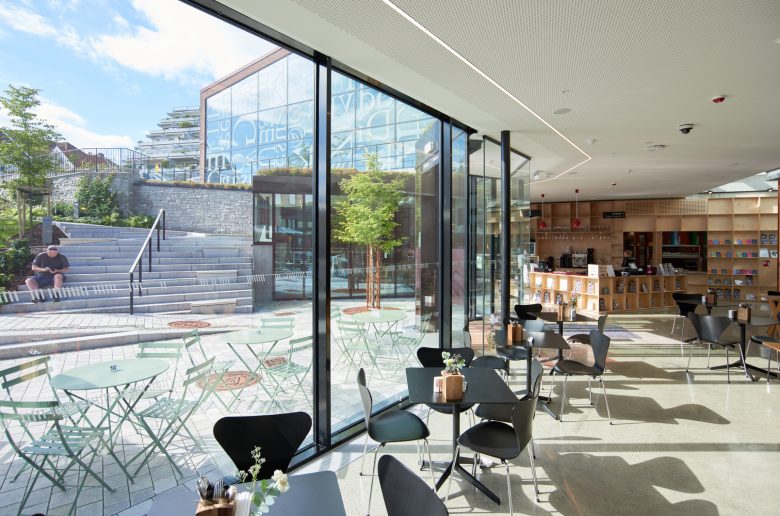
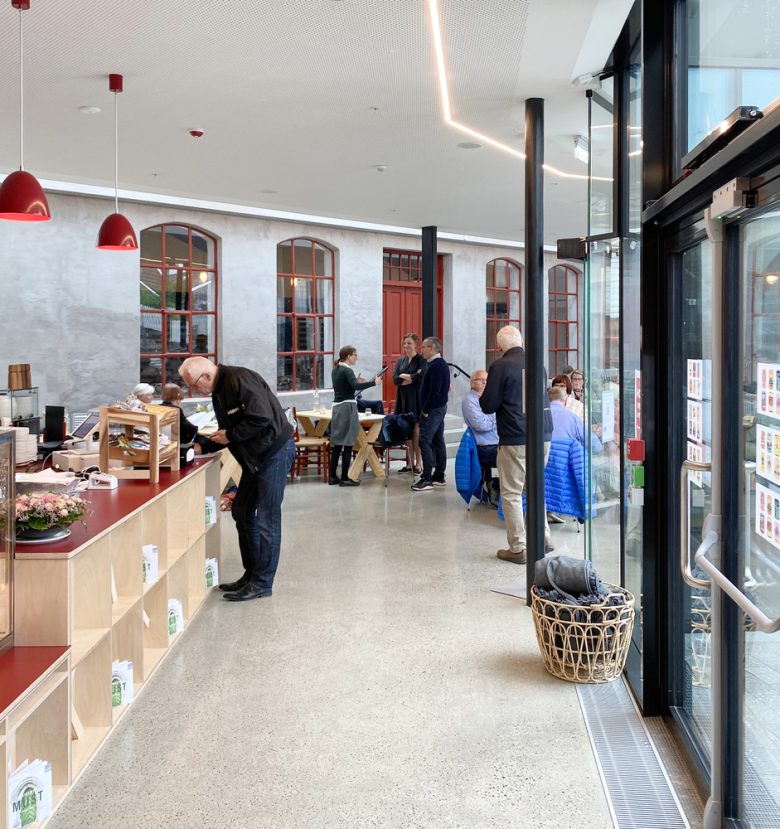
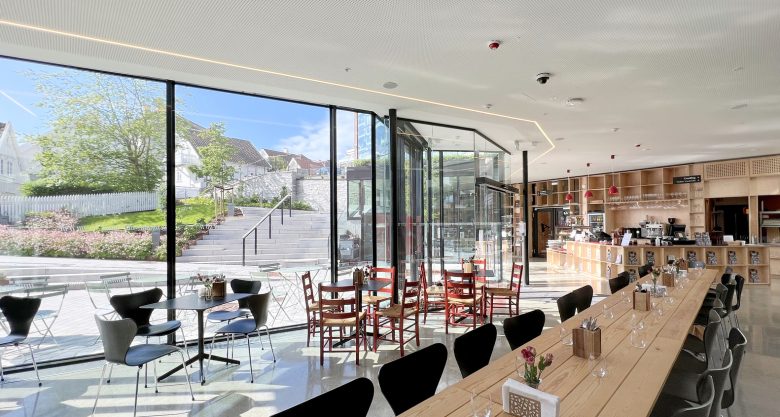

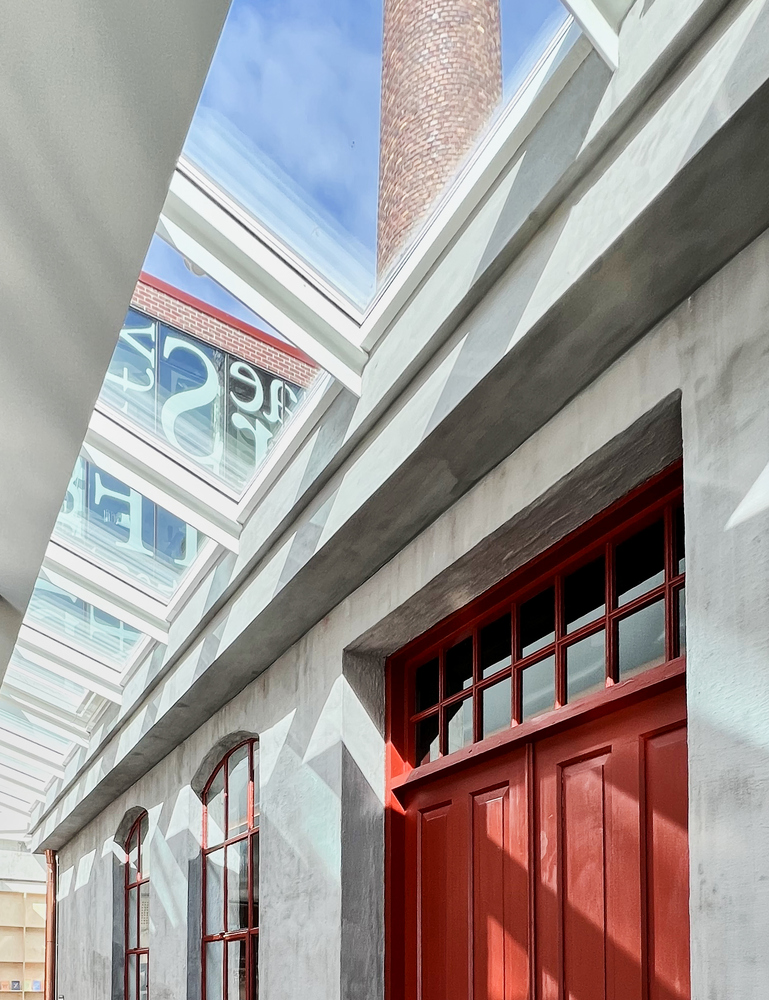
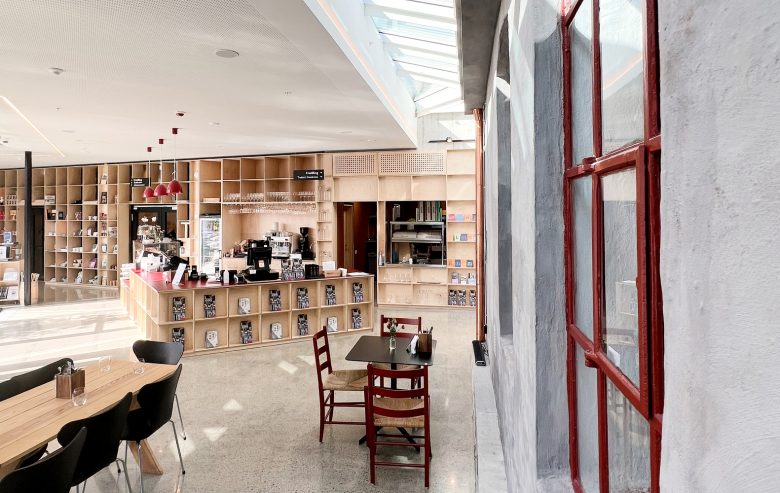
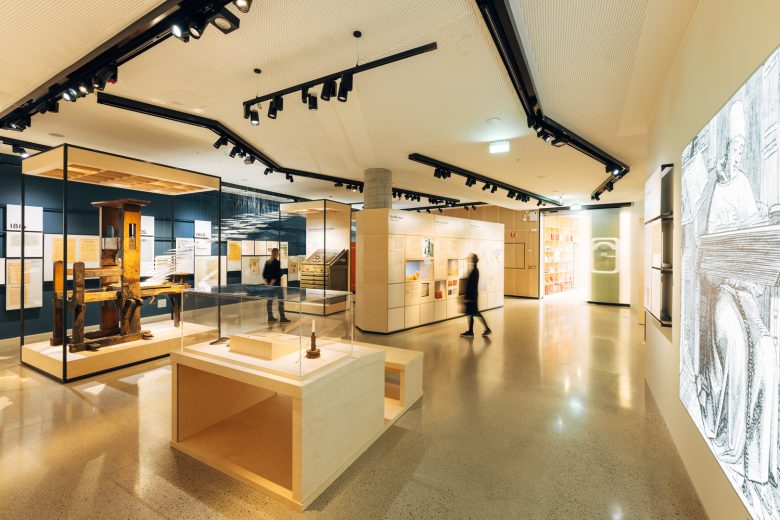
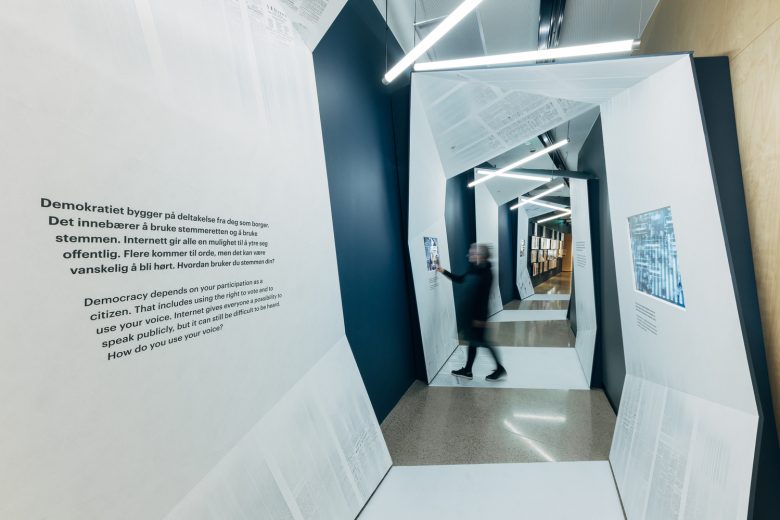
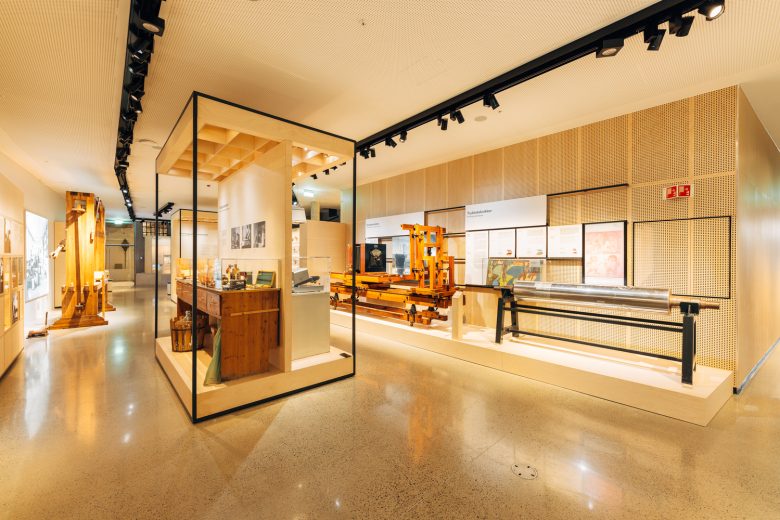
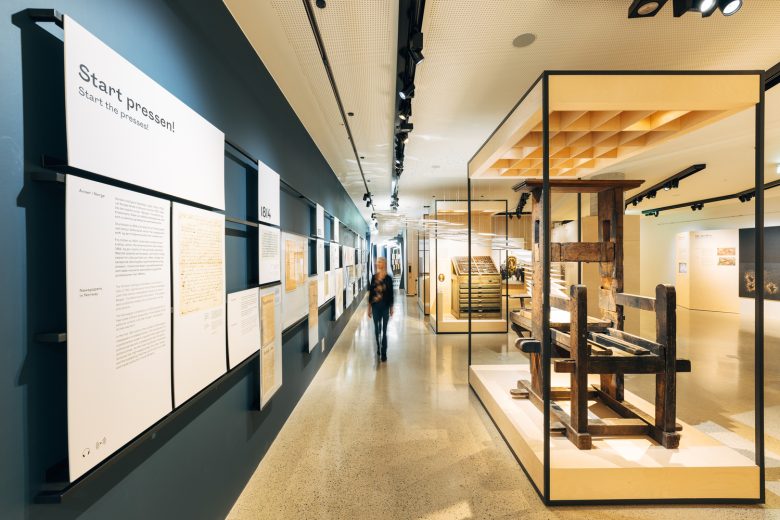
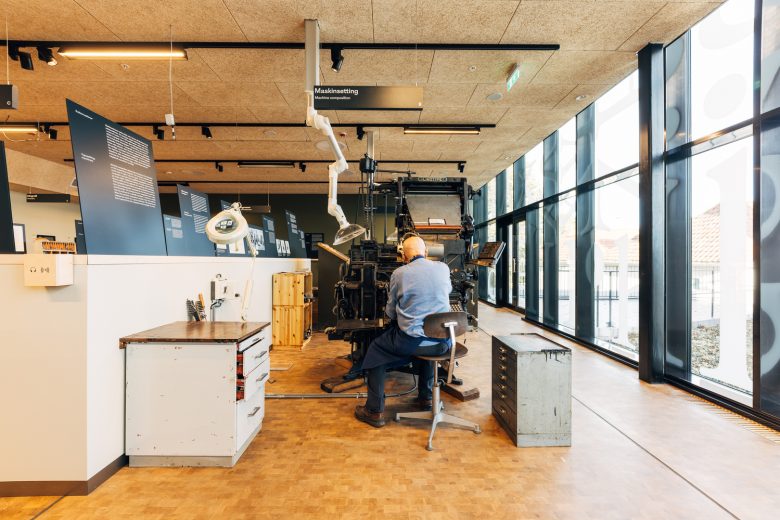
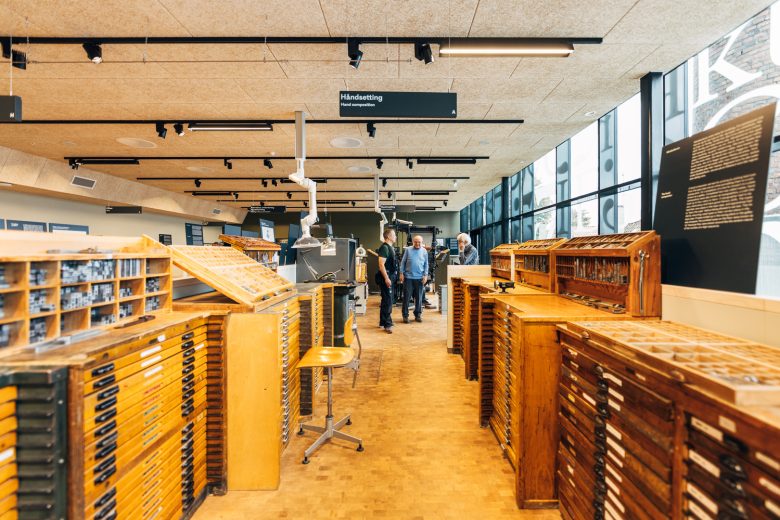
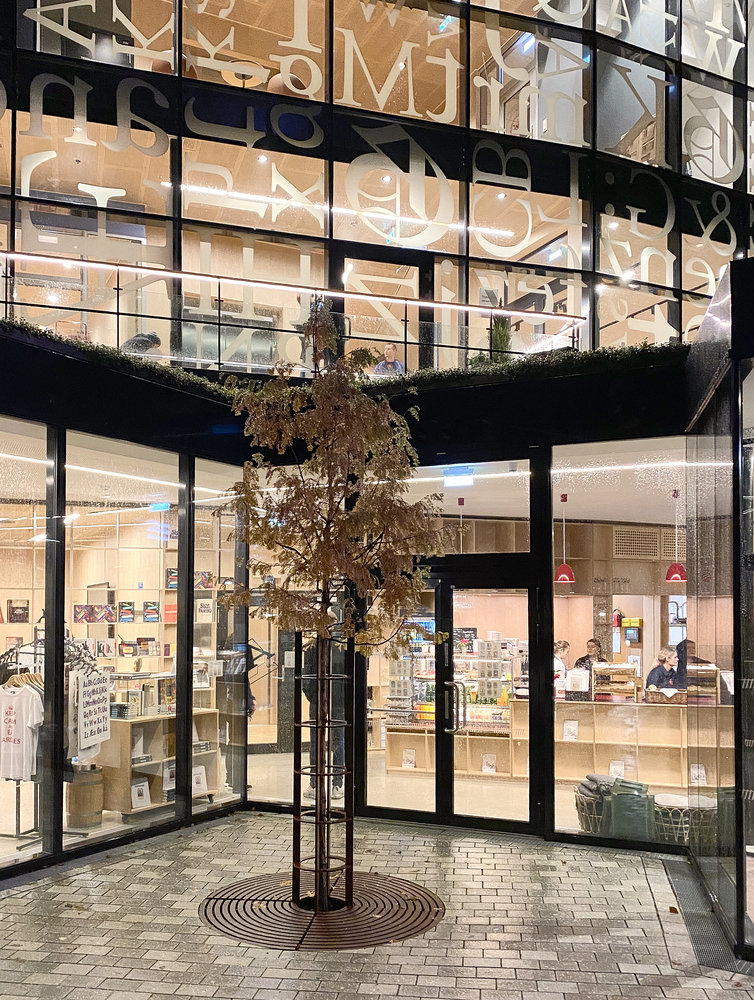
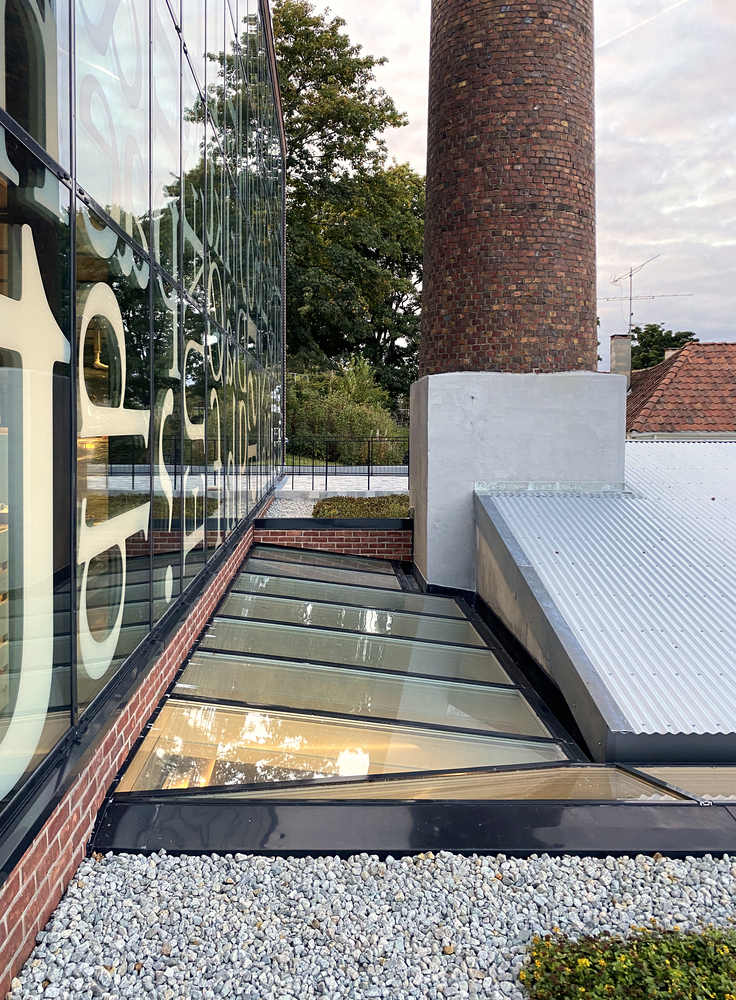
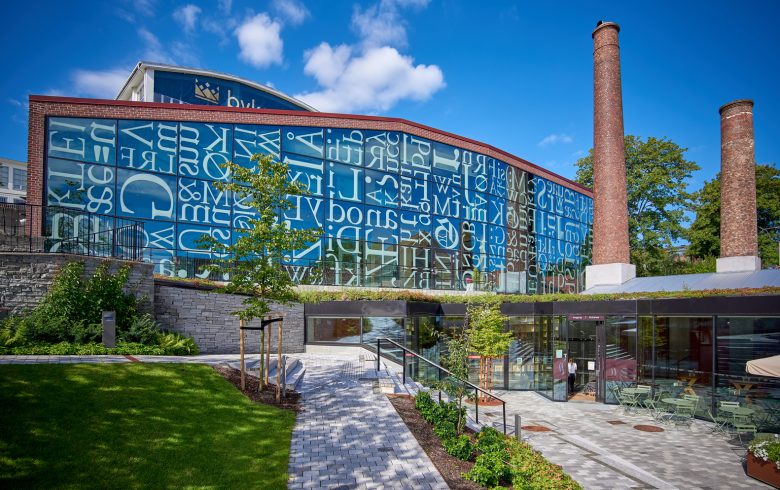
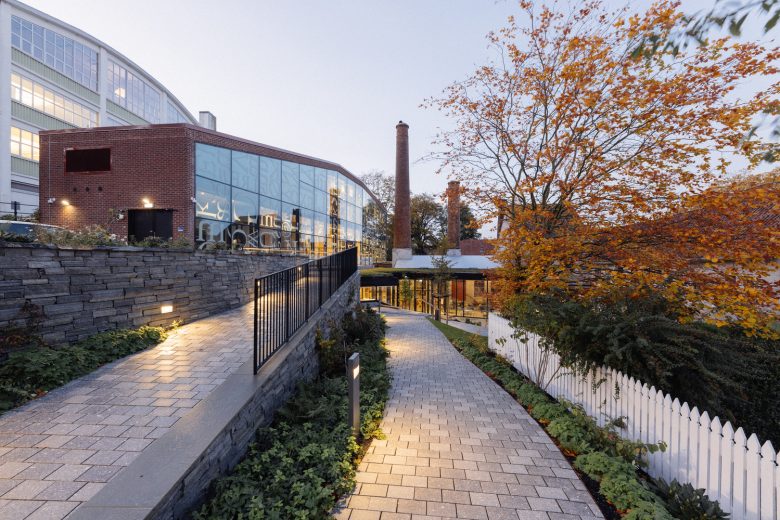

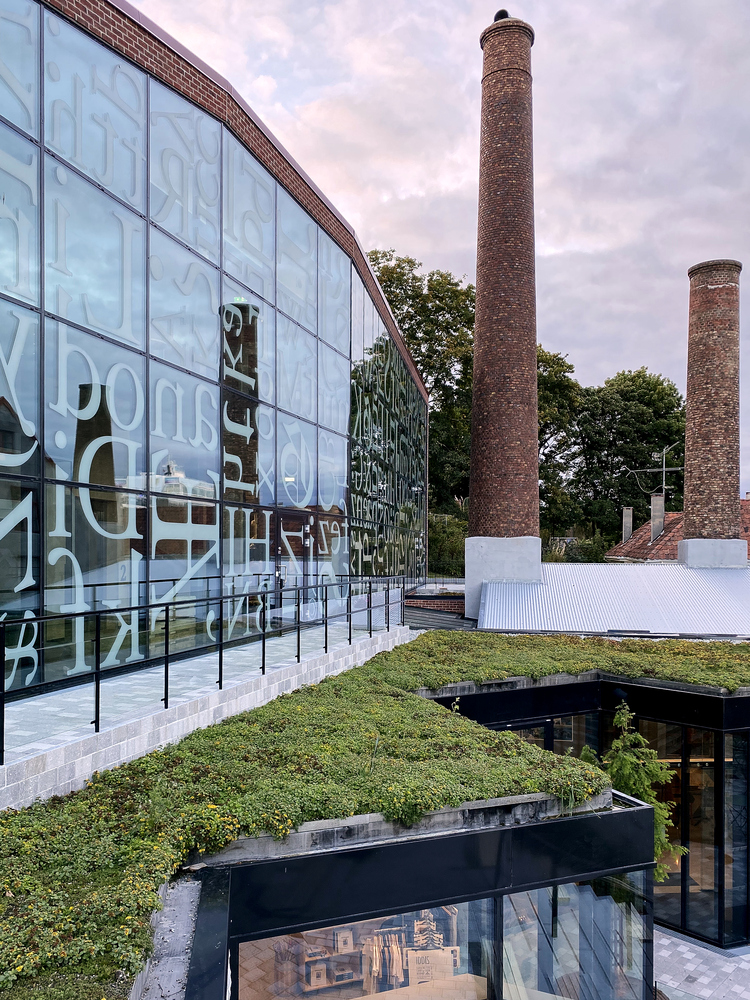
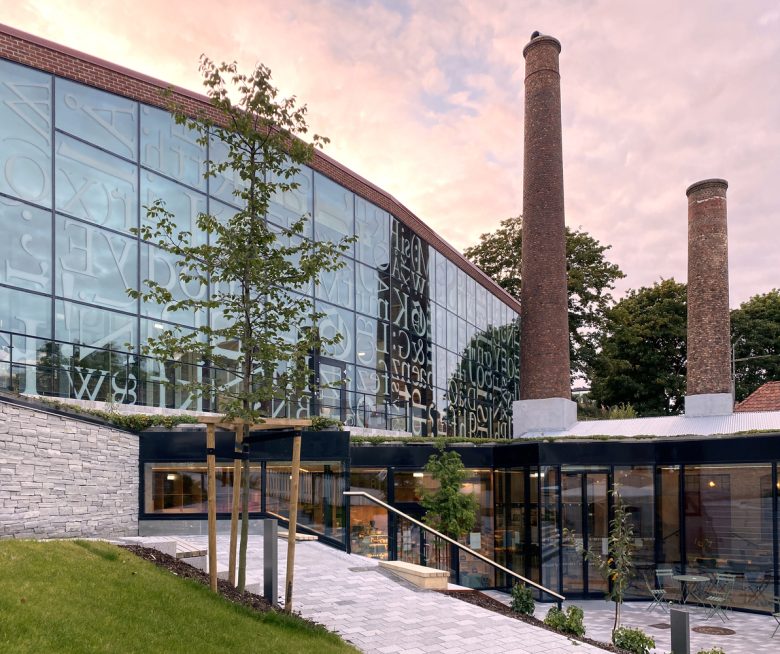
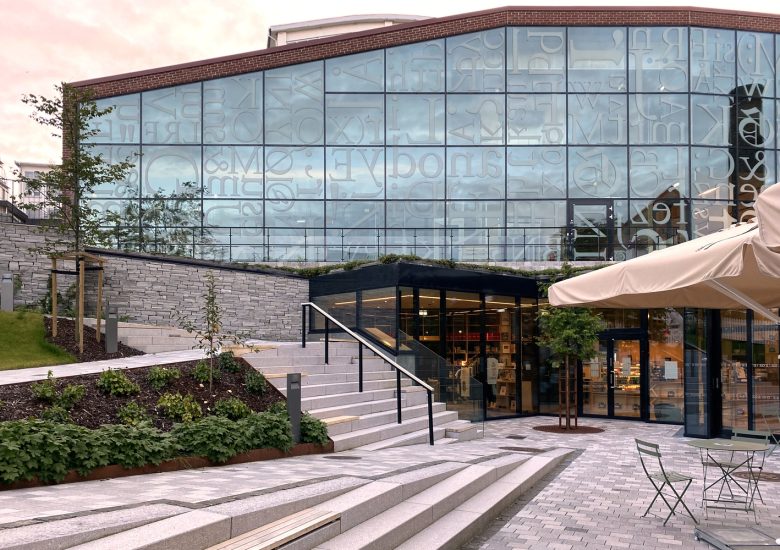
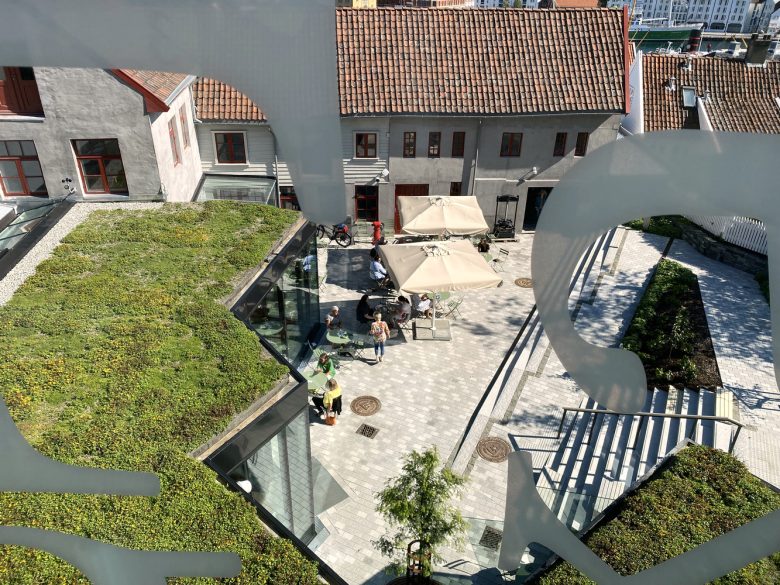

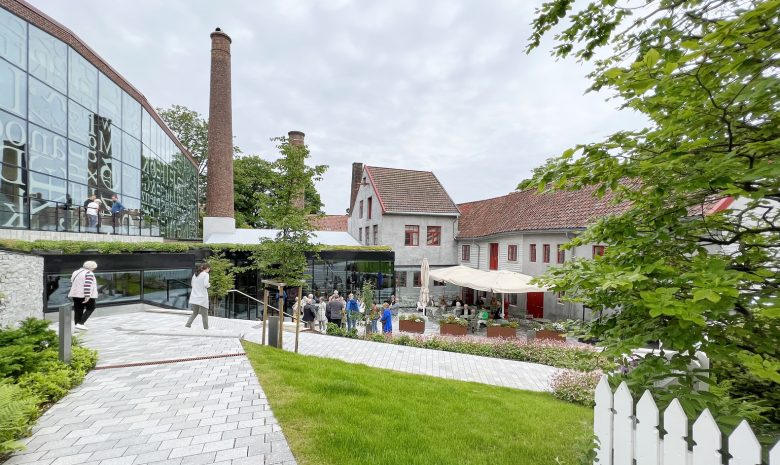
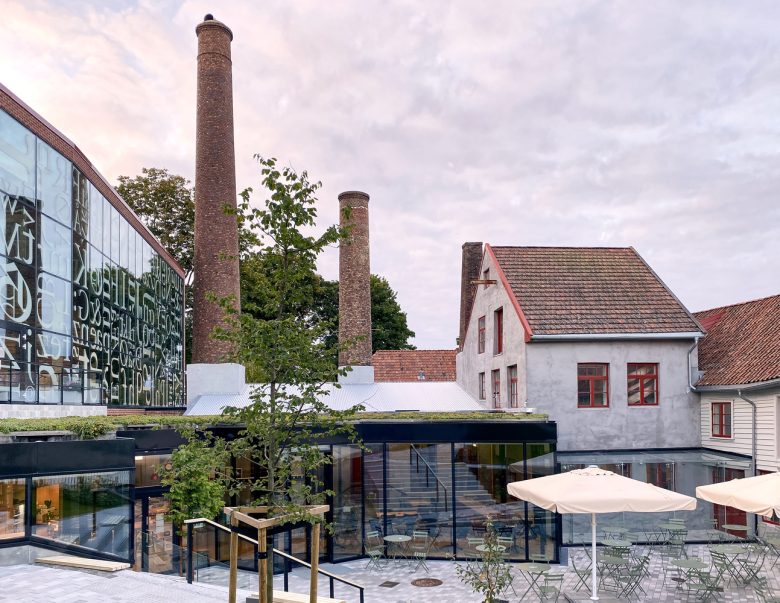
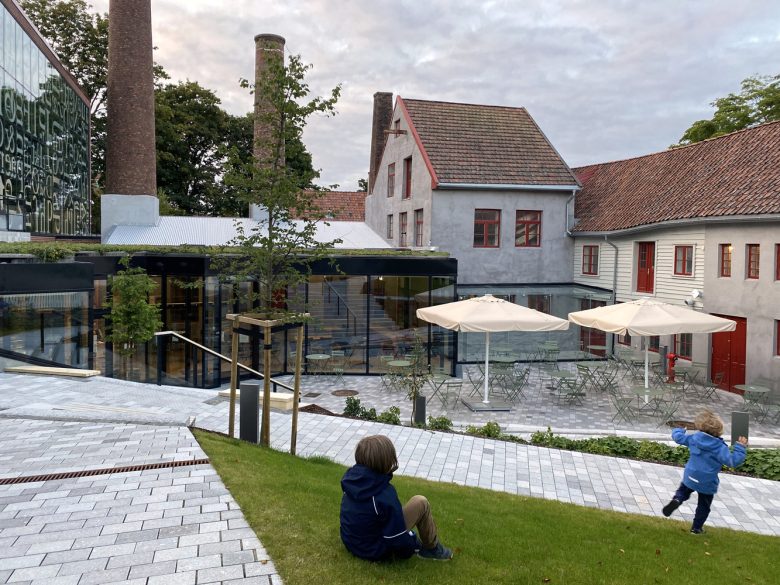
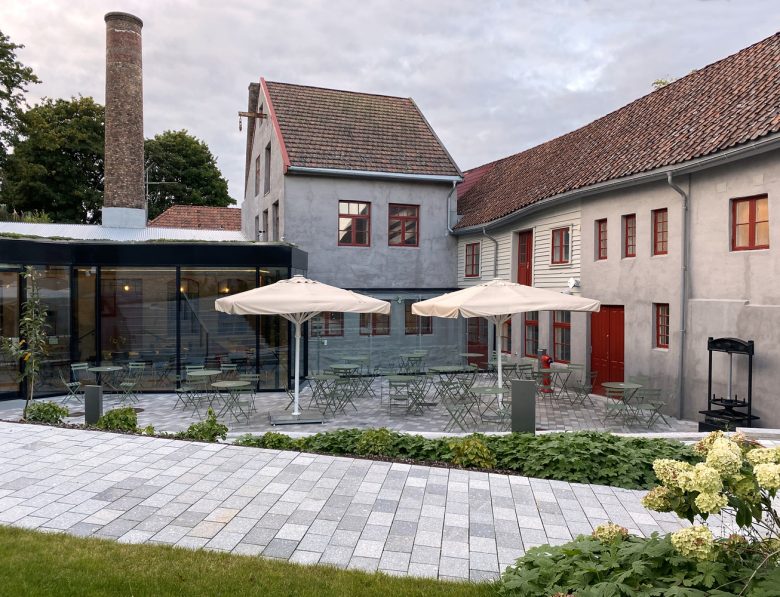
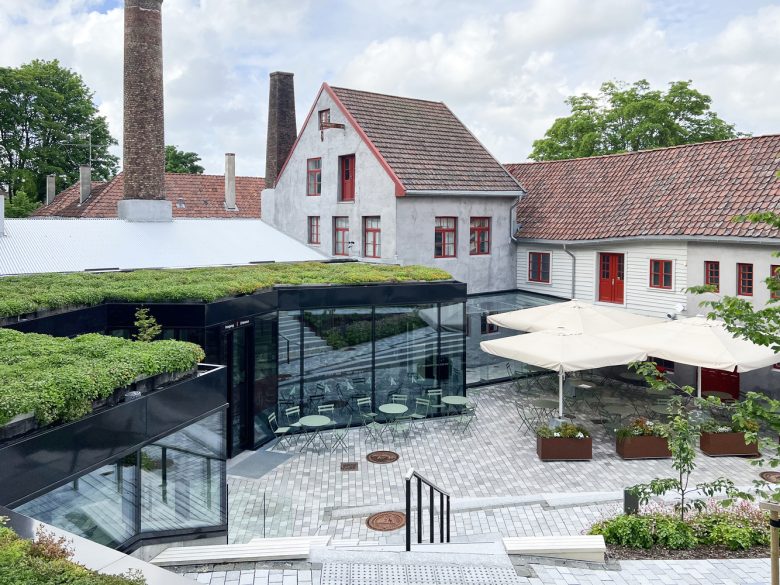
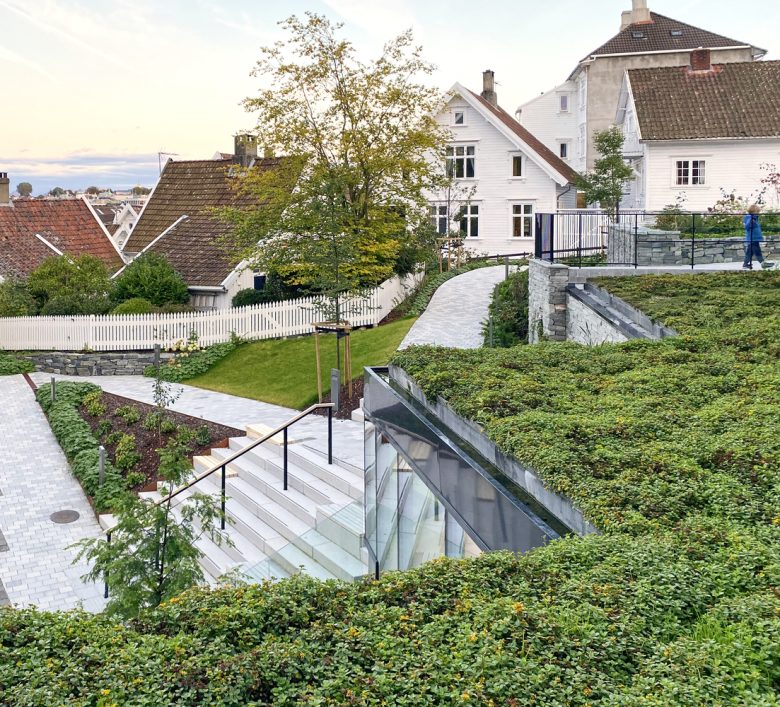

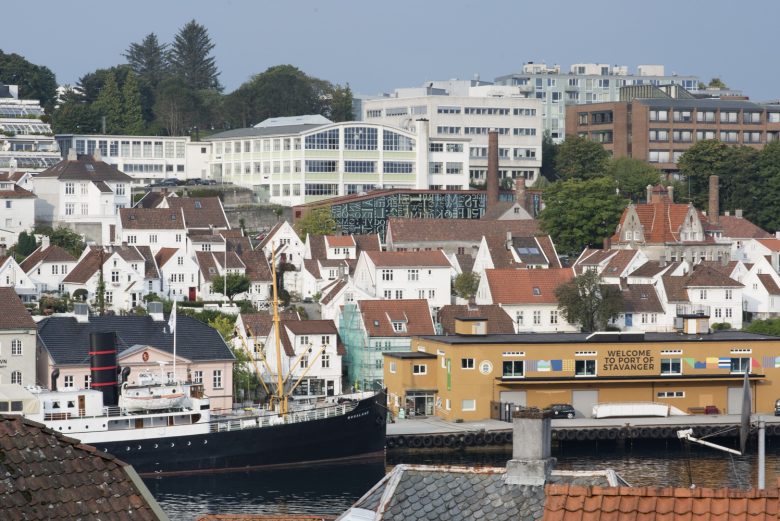
Add to collection


